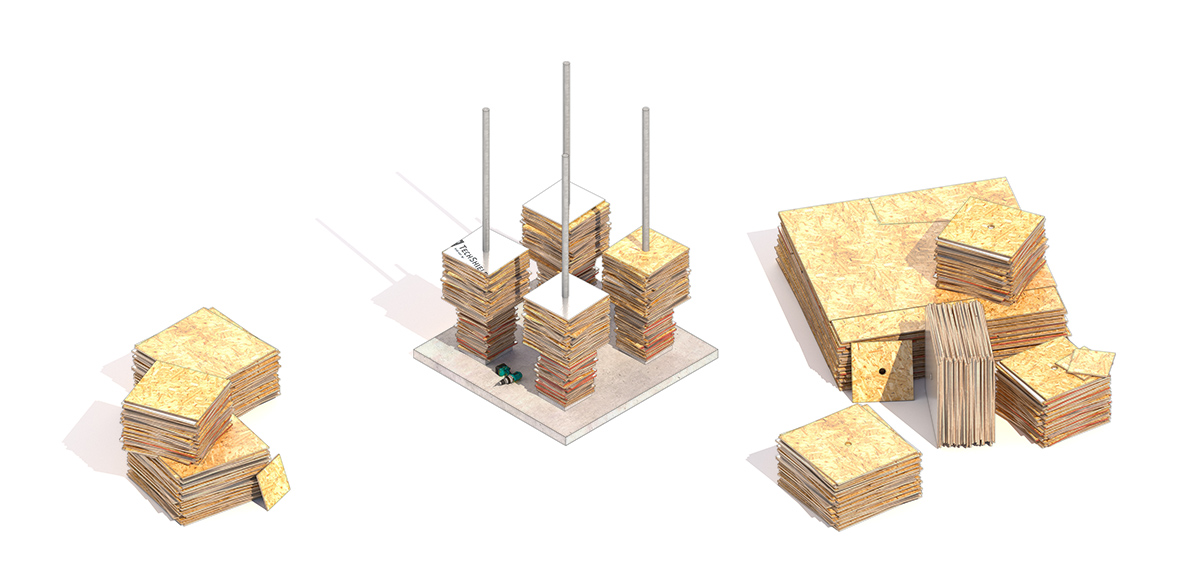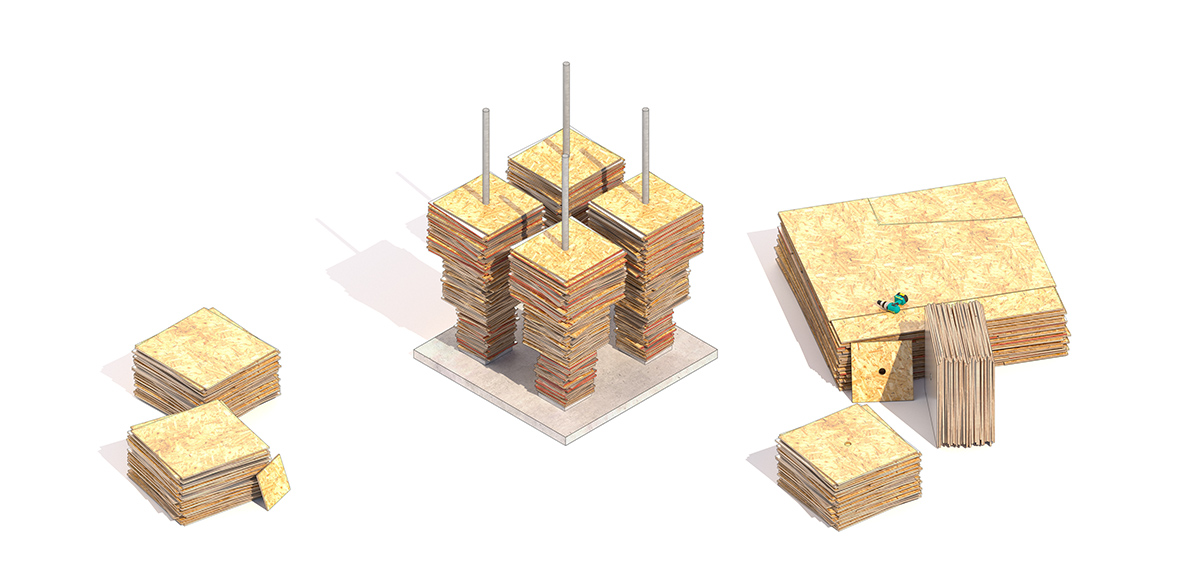
Ziggy (OSB-001)
Wake Forest, Nc.
2020
An Environmental Sculpture: Ziggy
The Community of Wake Forest, NC is experiencing a period of rapid, hyper-development, with hundreds of single-family housing units recently completed, in progress, and planned. This reflects exciting growth, which has both positive and negative implications. A dynamic influx of new residents expands the community, brings new resources and helps the economy. However, rapid growth and single-family home construction generates considerable amount of construction waste, some of which will be adapted into the material for the proposed sculpture: Ziggy.
In a stacked form reminiscent of the ancient ziggurat temples of Mesopotamia, Ziggy will be constructed from layers of Oriented Strand Board (plywood), sourced from residential construction sites in the vicinity of Wake Forest and the artist’s home in Holly Springs, NC. All the material will be new, leftover off-cuts, sealed with polyurethane, which will be able to withstand weather exposure during public display as part of the Sculpture Wake Forest exhibition.
Unlike its ancient counterpart, the mass of the sculpture thickens as it rises to the sky. The heft of the entire sculpture is deconstructed by the layers of plywood, calling to mind the amount of material involved in the current, massive growth in the area. Utilizing prefabricated modules, the structure begins with four steel pipe columns cast into a concrete mat footing and builds from the smallest discarded off-cut blocks at the base to the largest, unifying piece at the top. The incremental changes total 17 blocks composed of over 500 pieces of plywood. The individual blocks can be prefabricated in the studio and transported for assembly to the site.
Ziggy’s design highlights the features of the individual layers of plywood, including some foil-backed pieces that offer a chrome reflection and the colorful, orange edges that identify an industry standard for specific thickness and brands of the sheet material. The plywood layers are each slightly rotated off axis, which adds shadow and depth to the sculpture and encourages the viewer to consider its source, composition and materiality. The spaces between the columns draw the eye, inviting the viewer to engage with Ziggy and contemplate the energy and resources that have gone into the residential growth in the Wake Forest area.





